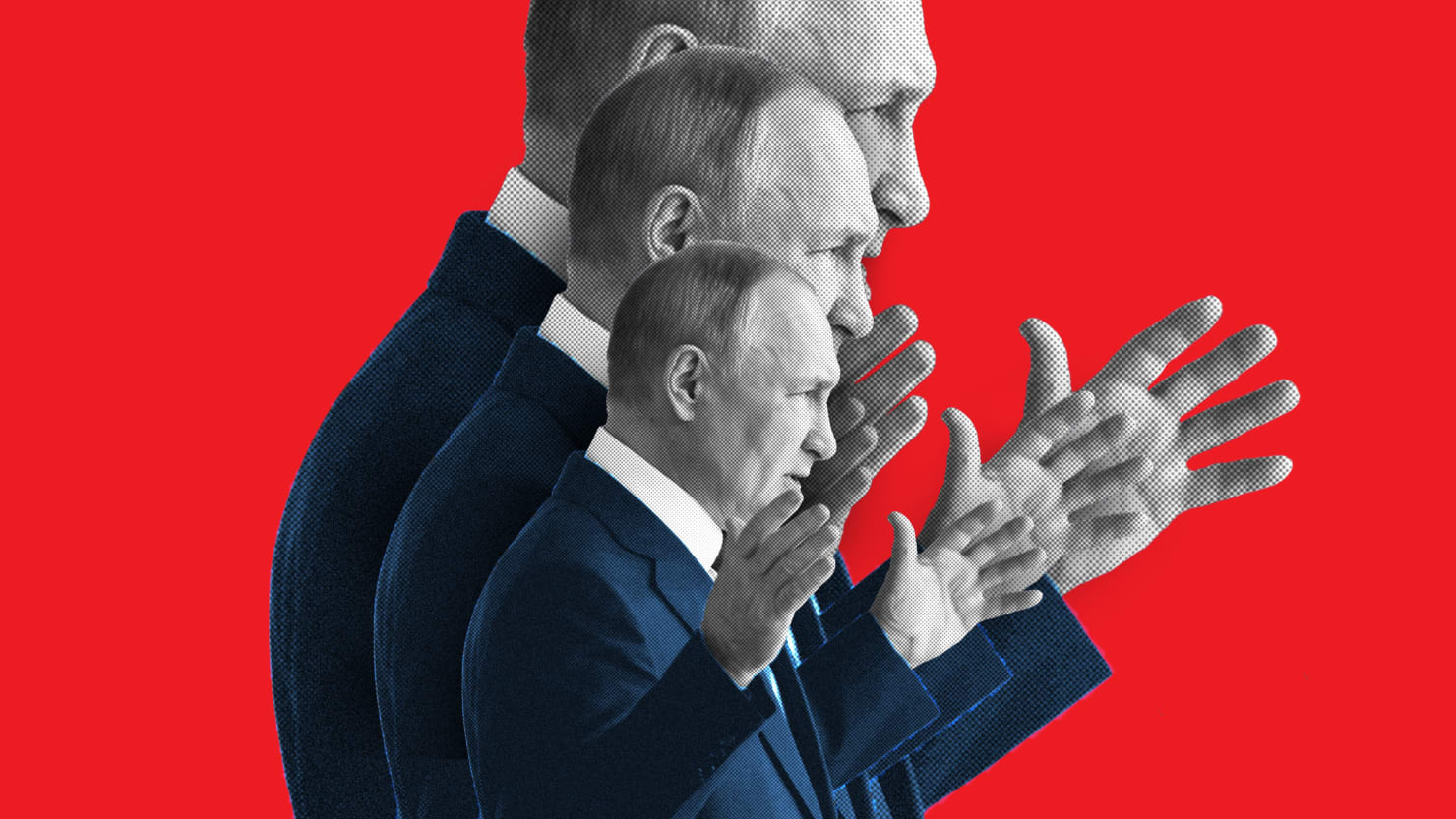Russian President Vladimir Putin is once again escalating his nuclear threats. Fortunately, his announcement that he would “suspend” compliance with an arms control treaty is not an immediate danger. His goal is to stoke nuclear fears in order to weaken Western support for Ukraine.
Putin said Tuesday that he would suspend his participation in the New START treaty. This agreement, in force since February 2011, enhances security by placing limits on the number of long-range nuclear weapons held by Russia and the United States. Neither can deploy more than 1,550 weapons on long-range missiles and bombers.
Putin says he will no longer participate in the inspections, data exchanges, meetings, and other mechanisms that help each side ensure that the other is following the rules. Both nations’ deployments are under the limits and there is no sign that Putin will suddenly produce new weapons. Nor would it matter much if he did. He already has enough to destroy human civilization many times over.
But this is not really about using nuclear weapons. It is about using nuclear threats.
Putin’s strategy is to break the unity of Western governments and the public. He is losing his war on Ukraine. His only hope is to try to overwhelm Ukrainian defenses with repeated infantry and artillery assaults. To do that, he must end Western military aid. He must stop the supply of ammunition, weapons, and other supplies. He must convince Western societies that helping Ukraine risks nuclear war.
In his speech on Tuesday, he blamed the West for the war, falsely claiming he is fighting NATO and the U.S. He said that the West is escalating and prolonging the war because it seeks Russia’s “strategic defeat.” Thus, he had to suspend inspections so that Westerners couldn’t “climb on our nuclear facilities” and use the information they gained “to strike at the bases.”
This is complete nonsense.
Because of the COVID pandemic, both sides suspended the inspections in 2020. Since travel restrictions eased, the U.S. wanted to restart the visits, but Russia has refused. But this has nothing to do with real security concerns—the U.S. doesn’t need inspections to know exactly where Russia’s nuclear bases are. Putin is simply spinning a tale to add to his litany of grievances against the West. He will use his extensive networks to spread these themes to sympathizers in the West and the Global South.
His nuclear threats have proven effective, even as it has become clearer that Putin is highly unlikely to ever use nuclear weapons in his war. Those on the left and right who oppose helping Ukraine cite the risks of nuclear war as one of their top reasons for ending military aid. Nothing, they say, is worth the risk of a global thermonuclear war.
So Putin once again rattles the nuclear saber. Though there is no imminent risk of nuclear use, his move does strike another blow at what is left of the nuclear guardrails that have provided some security and stability during the nuclear age.
New START is the last remaining strategic arms treaty. It is the direct descendent of the process begun more than 50 years ago by President Lyndon Johnson and of the first treaty, successfully negotiated by President Richard Nixon, the Strategic Arms Limitation Treaty (SALT). Over the past few years, President Donald Trump and Putin ended several of these agreements, including a treaty limiting nuclear missiles in Europe, one that allowed for “open skies” inspections, and the accord that rolled back and contained Iran’s nuclear program.
Putin’s move puts this last treaty standing in grave danger. If his suspension lasts, it will likely mean the treaty dies, rather than being replaced by a new agreement for deeper cuts in arsenals. Experts at the Federation of American Scientists estimate that without the treaty limits, both Russia and the United States could roughly double their deployed warheads, even without building any new weapons. It would take just a few months for them to pull warheads out of their reserve stockpiles and upload them to existing missiles.
The guardrails would be gone. The risks of nuclear use by accident, miscalculation, or madness would again rise.
The Biden administration has responded to this latest provocation with calmness and resolve. But it needs a long-term strategy for how to save the arms control process.
That journey begins with a Ukrainian victory which shows the world that nuclear threats do not force a nation to comply or collapse. A victory that demonstrates that nuclear weapons are nearly useless, all risk, and little benefit. Then we may be able to rebuild the guardrails, restore some stability, and get back to the job of reducing the world’s obsolete nuclear arsenals.



